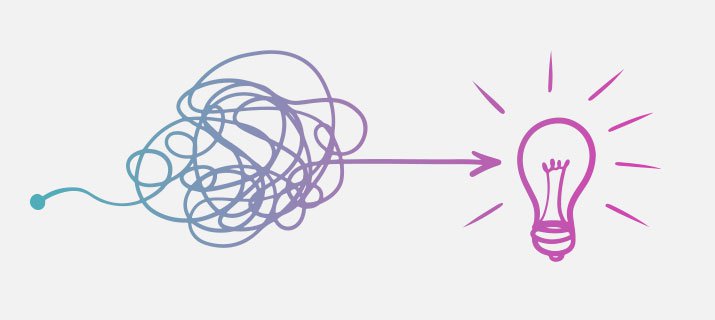7 Steps of Strategic Sourcing Process
- 06/09/2022
- HonestFulphilment
Sourcing is a core step toward profitability, but because companies come in all shapes and sizes, it can be challenging to determine a sourcing process that works for all companies.
Most companies follow the 7-step sourcing process defined by A. T. Kearney. Since 2001, the 7-Step Strategic Sourcing Process has stood the test of time and has become the gold standard for sourcing.
The strategic procurement process can not only ensure the efficiency and accuracy of your procurement department, but also save your company valuable time and resources. By following these 7 steps to an effective sourcing process, you will be able to develop a strategy that best fits your business needs.
What is Strategic Sourcing?
Strategic sourcing is a procurement process that connects data collection, spend analysis, market analysis, negotiation, and contracting. Strategic sourcing is the process of developing channels of supply at the lowest total cost, not just the lowest purchase price. Ensure that the organization’s procurement needs are met profitably.
It expands upon traditional organizational purchasing activities to embrace all activities within the procurement cycle, from specification to receipt, and payment for goods and services to sourcing production lines where the labor market would increase firms’ ROI.
Strategic sourcing processes aim for continuous improvement and re-evaluation of the purchasing activities of an organization.
What is the 7-Step Strategic Sourcing Process?
Understand the spending category

Before planning anything else, be sure to clearly define the purchasing categories and products. Who are the end customers for these goods and services? Where are they located and what are the logistics used? Who else is included in the supply chain?
Visibility of spend is key to understanding the category and the commodities within it, and the information should be stored, categorized, analyzed, and ultimately validated.
Research the supply market

Market conditions change rapidly. When implementing a strategic sourcing plan, an analysis of the potential supplier market allows you to obtain the best value for money when it comes to the price of goods and services, raw materials, drivers, transportation, and fuel costs.
A thorough analysis of your current and potential suppliers, supplier revenue, or market share can be used to assess the supplier’s market position and industry performance, as well as the risks and opportunities associated with the supplier market. And suppliers with a large market share can allow you to mitigate the risk to the market.
Develop a sourcing strategy

Deciding where and how to buy while minimizing risk and cost can be a challenge. In order to be able to work with the most appropriate suppliers, you should consider both the suppliers you currently work with and potential suppliers. The sourcing strategy you create should be aligned with the requirements and goals of your business as well as your capabilities and resources. Establish a cross-functional sourcing team that includes stakeholders, subject matter experts, and end customers.
Select an appropriate sourcing process

Time to solicit bids! The most common method that many businesses are using is a Request for Proposal (RFP).
If you’re not familiar with the term, RFPs is a document that solicits proposals, which is often used through a bidding process, written by an organization interested in acquiring a product or service from vendors for their project. The document outlines the details of product or service specifications, requirements, pricing breakdown, legal and financial terms and conditions, and evaluation criteria.
Negotiate with suppliers

The process of selecting potential suppliers includes talking to different suppliers and negotiating with shortlisted suppliers in multiple rounds of meetings. The selection of suppliers should be based on pre-agreed criteria, and the drafted contract should be read and signed by both parties.
Implement and integrate

Communicating with suppliers is an integral part of strategic sourcing. At the end of the negotiations, you may decide which suppliers you want to work with. The more complex your product, the more closely you should liaise with your suppliers. It is vital that suppliers should also attend company meetings to ensure they are aware of the latest changes and updates.
Benchmarking

Benchmarking is the last of the 7 steps of strategic sourcing, and many underestimate this step, and skipping it is a huge mistake. It is critical to measure supplier performance over time – starting with the current state of the benchmarked product and continuously monitoring results to ensure goals are met. By doing so, you can quickly identify a problem during implementation and notify your vendor to address it as quickly as possible.
Of course, the most effective way to track the success of your current program is to use e-procurement software. It can track your budget, spending and cost savings. By using automated software for reporting, you are more likely to get accurate feedback, simplifying your supplier relationship management (SRM).
Conclusion
The above are strategic sourcing best practices used by many procurement professionals. In this day and age, strategic sourcing is an integral part of all companies. The 7-step sourcing process plays an important role in helping companies achieve their business goals, and strategic sourcing not only keeps companies competitive but also closely connected to the market.
More about Sourcing Process:
Need a Quick Quote?
– Competitive price
– Quote within 24 hours
– 30+ Shipping methods
– Dedicated account manager
– Shopify/Woo integrations
– Autofulfil
– Auto tracking
– Plus much, much more

5 Best Wholesale Home Decor Suppliers 2023



10 Best Bikini Brands For Summer 2023








